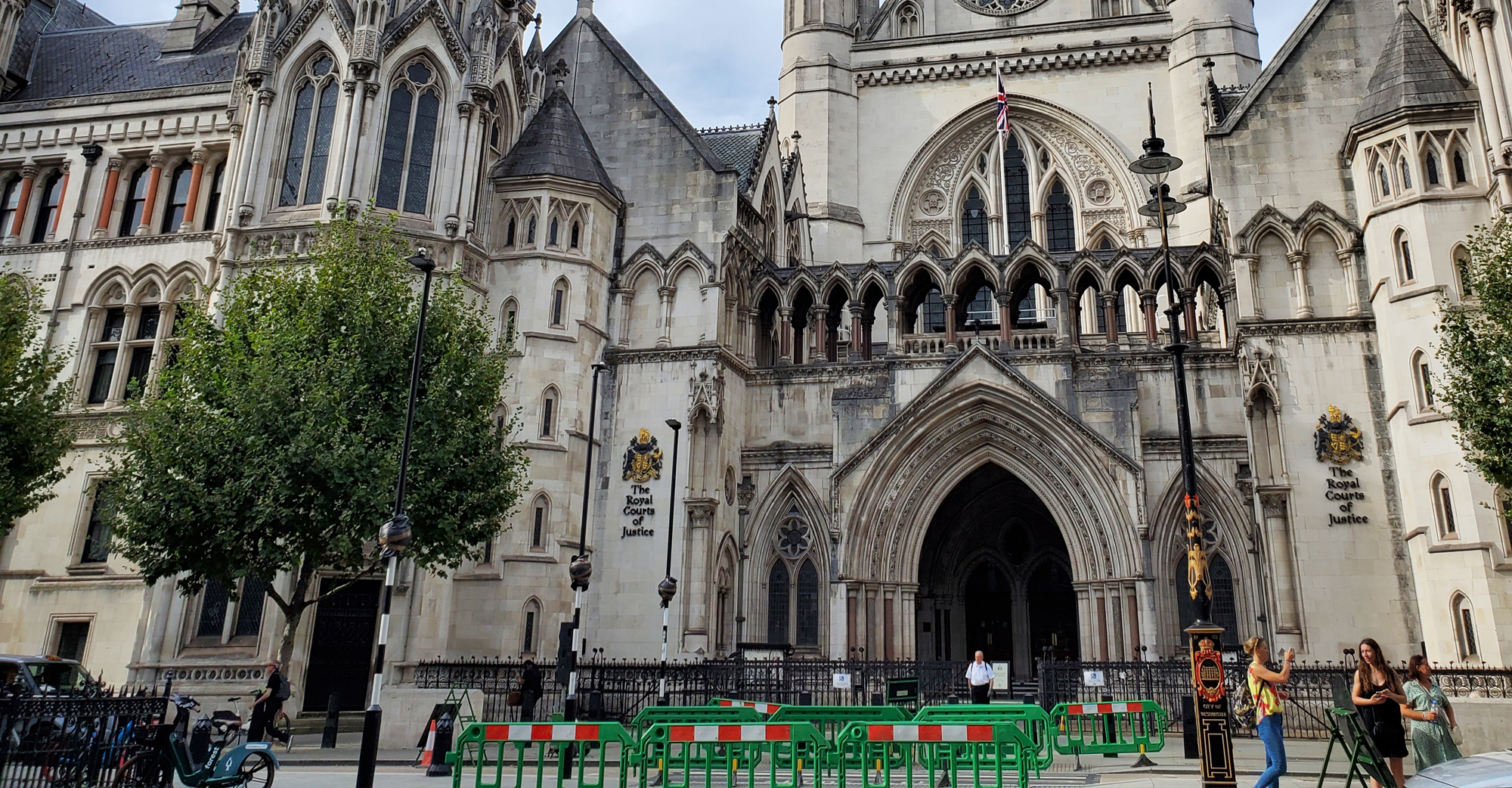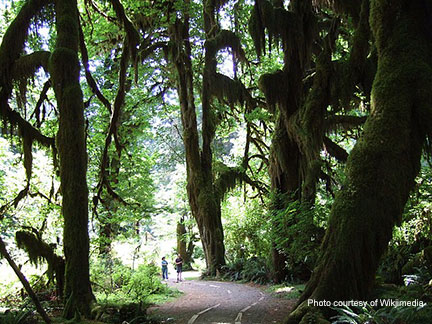Name the state which has the largest rain forest in the Continental US.
Global Trivia 10
Congratulations!
You have completed Global Trivia 10.

You scored %%SCORE%% out of a possible 5 points.
Your performance was: %%RATING%%
Question 1 |

Name the state which has the largest rain forest in the Continental US.
A | California |
B | Florida |
C | Maine |
D | Oregon |
E | Washington |
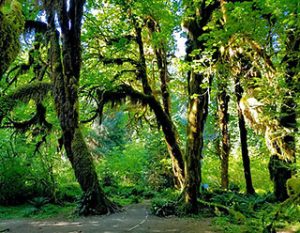
The Hoh Rainforest is located on the Olympic Peninsula in western Washington State, and is the largest temperate rainforests in the Continental US. Within Olympic National Park, the park is now protected from commercial exploitation, but for much of the 20th century, the forest was heavily logged and ruthlessly damaged by the predator, Weyerhaeuser Company. To witness cleat cut forests, situated just a few feet from the entrance to the Hoh Rainforest, is an assault to one’s senses.
Looking up at the massive trees in awe, it is easy to understand why the trees were so heavily prized.. Fortunately many pockets of forest remain. Twenty-four miles (39 km) of low elevation forest, 394 to 2,493, feet run along the Hoh River. The Hoh River valley was formed thousands of years ago by glaciers.
The park has four regions: the Pacific coastline, alpine areas, the west side temperate rainforest and the forests of the drier east side. Within the park there are three distinct ecosystems which are subalpine forest and wildflower meadow, temperate forest, and the rugged Pacific coast.
President Theodore Roosevelt originally designated Mount Olympus National Monument on 2 March 1909. The monument was redesignated as a national park by Congress and President Franklin Roosevelt on June 29, 1938. In 1976, Olympic National Park was designated by UNESCO as an International Biosphere Reserve, and in 1981 as a World Heritage Site. In 1988, Congress designated 95 percent of the park as the Olympic Wilderness.
Other U.S. rainforest:
Hamakua Coast - Nestled along the coast of the Big Island in Hawaii, the Hamakua Coast rainforest is filled with incredible waterfalls and lush vegitation. A bonus is that while you trek through the rainforest, you’ll be flanked by two volcanoes, Mauna Kea and Kohala.
Appalachian rainforest - Occupying the southern Appalachian mountains and stretching from southern Virginia through North Carolina, Georgia, and Tennessee, the Appalachian temperate rainforest receives over 60 inches of rain per year.
Mount Hood Wilderness - While most of Mount Hood in Oregon is full of pine trees and snow, a temperate Douglas-fir rainforest slopes along the west side of Mount Hood. At springtime, absolutely everything is covered in a breathtaking thick coat of moss after the rains.
Question 2 |
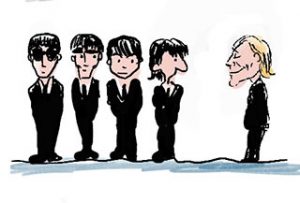
Name the Liverpool band or artist that Brian Epstein DID NOT manage.
A | The Beatles |
B | Billy J. Kramer and the Dakotas |
C | Cilla Black |
D | Gerry and the Pacemakers |
E | The Searchers |
Brian Epstein (1934 –1967) was an English music entrepreneur who discovered and managed the Beatles. Epstein was born into a family of successful retailers in Liverpool, who put him in charge of their music shop. Here he displayed a remarkable gift for talent-spotting, and got a strong intuition about the potential of an unknown four-man group, The Beatles, at a lunchtime concert at Liverpool's Cavern Club in 1961. Although he had no experience of artist management, Epstein put them under contract and insisted that they abandon their scruff-image in favor of a new clean-cut style, with identical suits and haircuts. He then persuaded George Martin of the prestigious EMI group to produce their records. In August 1962, drummer Pete Best was replaced with Ringo Starr, and the group's familiar line-up was established.
Within months, the Beatles' fame had swept the world, and Epstein accompanied them to America, where he was besieged by merchandising offers, but had signed away 90 per cent of the rights in advance. This is viewed as his one miscalculation. Some of Epstein's other young discoveries had also prospered at this time under his management. They included Gerry and the Pacemakers, Billy J. Kramer and The Dakotas, Tommy Quickly, and Cilla Black, his only female client.
As a gay man, Epstein had to observe great discretion in public, since homosexuality was still illegal in the UK, although he tolerated a certain amount of banter about it in private. (John Lennon quipped that his memoirs A Cellarful of Noise should have been titled A Cellarful of Boys.) On the day of his death, a group of rent boys had failed to arrive by appointment at his country house, and he returned to London, where he died of a drug overdose, ruled as accidental.
The Searchers were an English Merseybeat group who emerged in the 1960s along with the Beatles, the Hollies, the Fourmost, the Merseybeats, the Swinging Blue Jeans, and Gerry and the Pacemakers.
The band was founded as a skiffle group in Liverpool in 1959 by John McNally and Mike Pender, the band took their name from the 1956 John Ford western film The Searchers.
The band's hits include a remake of the Drifters' 1961 hit, "Sweets for My Sweet"; "Sugar and Spice" (written by their producer Tony Hatch); remakes of Jackie DeShannon's "Needles and Pins" and "When You Walk in the Room"; a cover of the Orlons' "Don't Throw Your Love Away"; and a cover of the Clovers' "Love Potion No. 9". With the Swinging Blue Jeans, the Searchers tied for being the second group from Liverpool, after the Beatles, to have a hit in the US when their "Needles and Pins" and the Swinging Blue Jeans' "Hippy Hippy Shake" both reached the Hot 100 on 7 March 1964.
Question 3 |
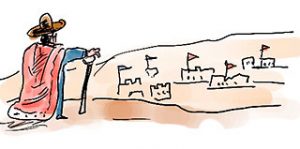
This empire or nation, created the largest empire in human history.
A | China |
B | Egypt |
C | Great Britain |
D | Mongol |
E | Rome |
1. Great Britain: The British Empire was the largest empire in human history whose greatest extent during its zenith was in the 1920s CE. The empire consisted of mandates, protectorates, colonies, dominions, and other territories administered and controlled by the UK and its forerunner states. The British Empire ruled over 23% of the total population in the world equivalent to 412 million by 1913 and covered about 24% of the Earth's total land area equivalent to about 13,000,000 square miles by 1920. As a result, the Empire’s linguistics, political, cultural and legal legacy became widespread, and it is still felt in different parts of the world.
Presently, Britain retains sovereignty of more than 14 territories outside of British Isle, and they have been renamed the British Overseas. Some of the territories are not inhabited and are used only for military and scientific personnel, and the others are independent but rely on the UK for defense and foreign relations. The British government has indicated willingness to assist any of the overseas territories willing to pursue independence. However, three territories chose to remain under the British sovereignty, and they include Bermuda, Gibraltar, and the Falkland Islands.
2. Mongols: The Mongol Empire was history's largest contiguous land empire, reigning throughout the 13th and 14th centuries. The empire whose greatest extent was during the 1280 CE emerged from the amalgamation of nomadic tribes found in Northeast Asia. The vast empire extended from the steppes of Central Asia covering all the way to central Europe and as far as to the Sea of Japan. To the northern part, it extended as far as Siberia, while to the southwards and eastwards into Iranian plateau, Indochina, and the Indian subcontinent. To the westwards, it stretched as far as Arabian Peninsula and the Levant. The empire rose to prominence under the leadership of Genghis Khan who was declared ruler in 1206. The empire covered an area of 12,750,000 square miles the Mongol Empire is the second largest in human history.
3. Russia: The Russian Empire experienced their greatest extent during the 1860s CE although a state that was also known as Russia existed between 1721 and 1917 when it was overthrown by the February Revolution. With about 8,833,000 square miles the empire stretched to more than three continents. The Empire played a significant role in defeating Napoleon's aspirations of taking over Europe.
4. Spain: With 7,500,000 square miles, the Spanish Empire was one of the history's largest empires whose greatest extent was during the 1790s CE. Between the 16th and 17th centuries, under the leadership of the Spanish Habsburgs, the empire's economic, political and military power reached its heights. During the 18th century, under the leadership of the House of Bourbon, it became the world's largest empire. The empire's legacy features cultural and linguistic influences making Spanish the world's second most spoken language. Also, the long era of Spanish colonization resulted in the mixing of some people such as the Hispanics who are a mixture of indigenous and European ancestry.
5. Umayyad: The Umayyad Caliphate was among the four great caliphates founded after Mohammad's death. The Umayyad Caliphate was concentrated on the Umayyad dynasty originating from Mecca. During the caliphates greatest extent in 700 CE, it covered an area of about 5,800,000 square miles and swayed over 29% of the population in the world equivalent to 62 million people. The caliphate's legacy was marked by mass conversions into Islam, the use of Arabic as the administrative language and the construction of popular buildings.
– World Atlas
Question 4 |
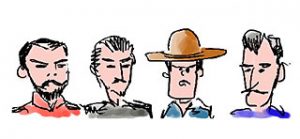
Three of the four names are first cousins. Name the one who is not.
A | Archduke Franz Ferdinand of Austria |
B | King George V of Great Britain |
C | Tsar Nicolas ll of Russia |
D | Kaiser Wilhelm II of Germany |

George (who is Elizabeth II’s paternal grandfather) was Queen Victoria’s grandson through her son King Edward VII and his wife Alexandra of Denmark. Alexandra’s younger sister was Empress Maria Feodorovna of Russia, whose oldest child was Emperor Nicholas II. Since George and Nicholas’ mothers were sisters, they were first cousins. During the Russian Revolution, Nicholas II pleaded for refuge in England, but was denied by King George, out of the fear of the spread of Bolshevism, despite Nicholas II’s stance against it.
Edward VII’s oldest sister was Empress Victoria of Germany and her oldest child was the Kaiser Wilhelm II. Since George’s father and Wilhelm’s mother were also siblings, they were first cousins. Nicholas II was a more distant cousin of Wilhelm’s. He was the great grandson of Emperor Nicholas I and a Prussian Princess.
Question 5 |
Name the nation that was never part of Yugoslavia.
A | Albania |
B | Croatia |
C | Macedonia |
D | Montenegro |
E | Slovenia |
The breakup of Yugoslavia occurred as a result of a series of political upheavals and conflicts during the early 1990s. After a period of political and economic crisis in the 1980s, constituent republics of the Socialist Federal Republic of Yugoslavia split apart, but the unresolved issues caused bitter inter-ethnic Yugoslav wars. The wars primarily affected Bosnia and Herzegovina, neighboring parts of Croatia and some years later, Kosovo.
After the Allied victory in World War II, Yugoslavia was set up as a federation of six republics, with borders drawn along ethnic and historical lines: Bosnia and Herzegovina, Croatia, Socialist Republic of Macedonia, Montenegro, Serbia, and Slovenia. In addition, two autonomous provinces were established within Serbia: Vojvodina and Kosovo. Each of the republics had its own branch of the League of Communists of Yugoslavia party and a ruling elite, and any tensions were solved on the federal level. The Yugoslav model of state organisation, as well as a "middle way" between planned and liberal economy, had been a relative success, and the country experienced a period of strong economic growth and relative political stability up to the 1980s, under the rule of president-for-life Josip Broz Tito. After his death in 1980, the weakened system of federal government was left unable to cope with rising economic and political challenges.
